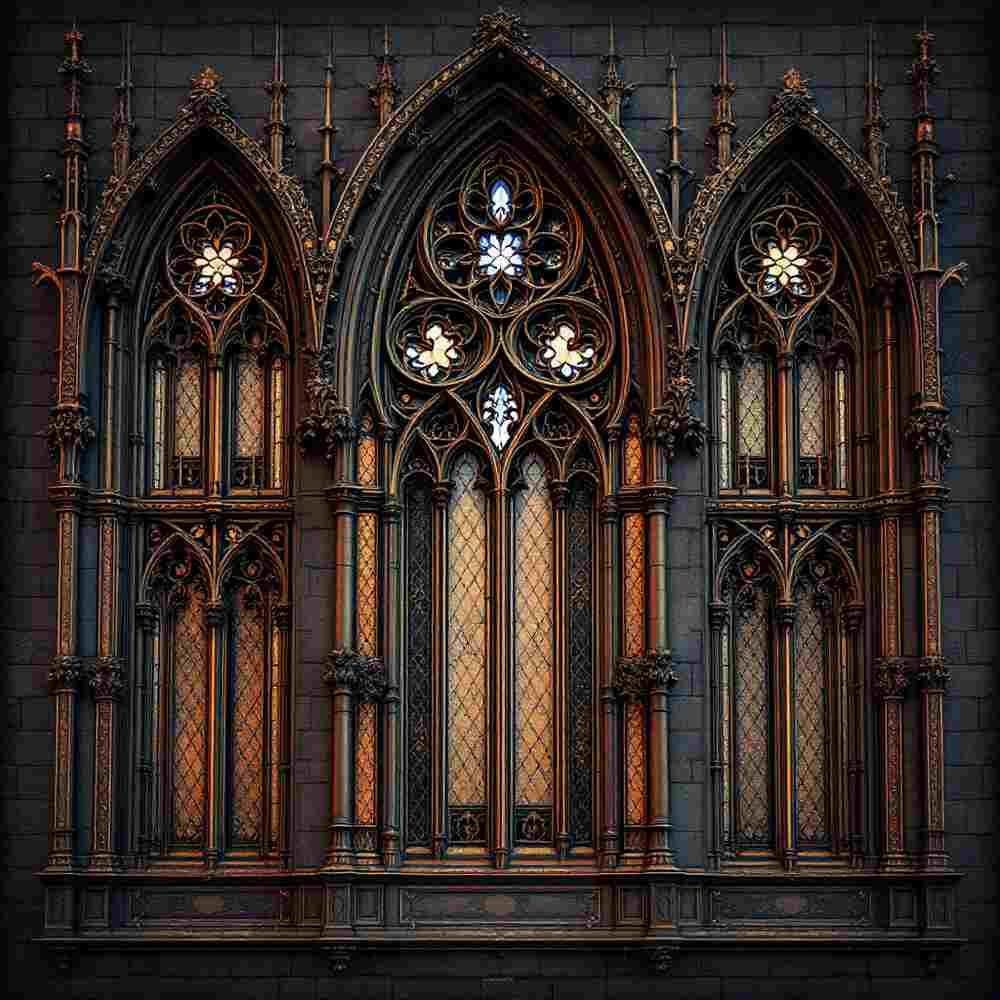The Victorian Gothic design is a captivating architectural style that emerged during the reign of Queen Victoria from 1837 to 1901. This era was marked by a revival of Gothic architecture, characterized by its intricate details and dramatic flair. The focus of this article is on the ornate windows that are a hallmark of Victorian Gothic designs. These windows are not just functional elements; they are artistic expressions that reflect the cultural and technological advancements of the time.
Windows play a crucial role in architecture, serving both aesthetic and functional purposes. They allow natural light to flood into spaces, enhancing the ambiance and mood of a room. Moreover, windows in Victorian Gothic architecture are a testament to the era’s technological innovations and cultural shifts. They symbolize the intersection of art and engineering, showcasing the era’s penchant for beauty and detail.
Historical Context
Emergence of the Gothic Revival
The Gothic Revival was a significant movement in the mid-19th century, driven by a desire to return to the grandeur and spirituality of medieval architecture. This movement was influenced by several factors, including the Romanticism of the period, which idealized the past and nature. Key figures like Augustus Pugin played a pivotal role in popularizing Gothic designs. Pugin’s work emphasized the moral and spiritual dimensions of architecture, advocating for designs that were both beautiful and meaningful.
Victorian Era Characteristics
The Victorian era was characterized by its love for jewel tones, intricate patterns, and ornate details. This aesthetic was reflected in the architecture of the time, where buildings were adorned with elaborate carvings and vibrant colors. Technological advancements, such as the development of new glass-making techniques, allowed for more elaborate window designs. These innovations enabled architects to experiment with different shapes, sizes, and patterns, leading to the creation of stunning windows that were both functional and decorative.
Types of Victorian Gothic Windows

Leaded Glass Windows
Leaded glass windows are a quintessential feature of Victorian Gothic architecture. These windows are made by joining small pieces of glass with lead cames, creating intricate patterns and designs. The use of colored glass added a new dimension to these windows, allowing light to filter through in a kaleidoscope of hues. This not only enhanced the visual appeal of the interiors but also created a sense of drama and mystery.
Casement Windows
Casement windows are another popular style in Victorian Gothic architecture. These windows are hinged at the sides and open outward, often featuring diamond-shaped panes. The design of casement windows is reminiscent of medieval architecture, linking the Victorian era to its historical roots. The practicality of casement windows, combined with their aesthetic appeal, made them a favored choice for many Victorian homes.
Bowed Windows
Bowed windows are unique in their design, featuring a curved shape that extends outward from the building. This design not only adds visual interest but also allows for more natural light to enter the space. Bowed windows create a sense of openness and space, making rooms feel larger and more inviting. Their distinctive shape and functionality make them a standout feature in Victorian Gothic architecture.
Design Elements and Aesthetics

Ornate Details and Patterns
Victorian Gothic windows are renowned for their ornate details and patterns. Common motifs include arches, tracery, and carvings, often inspired by nature and medieval designs. These elements add a layer of complexity and beauty to the windows, making them focal points in any architectural design.
Stained Glass Artistry
Stained glass is a crucial element in Victorian Gothic window design, used to create dramatic effects and tell stories through imagery. The artistry involved in creating stained glass windows is remarkable, with craftsmen painstakingly assembling pieces of colored glass to form intricate designs. Notable examples of stained glass can be found in prominent buildings, where they continue to captivate and inspire.
Cultural Significance
Symbolism in Design
During the Victorian era, windows were more than just architectural features; they were symbols of social status and personal expression. The design and complexity of a home’s windows often reflected the wealth and taste of its owner, making them a key element in the social fabric of the time.
Victorian Gothic in Modern Context
Today, there is a renewed interest in Victorian Gothic designs, with many architects and designers drawing inspiration from this rich architectural tradition. The influence of Victorian Gothic can be seen in contemporary architecture and interior design, where elements like ornate windows are used to add character and charm to modern spaces.
Case Studies
Notable Buildings Featuring Victorian Gothic Windows
Several significant structures showcase the beauty and complexity of Victorian Gothic windows. For example, the Houses of Parliament and St. Pancras Station are renowned for their stunning window designs. These buildings not only highlight the architectural prowess of the Victorian era but also underscore the lasting impact of Gothic design on architectural history.
Practical Considerations
Incorporating Victorian Gothic Designs Today
For homeowners looking to integrate Victorian Gothic designs into their modern homes, there are several practical considerations. Restoration of existing structures can preserve historical integrity, while new construction can incorporate Gothic elements to create a unique aesthetic. It’s important to balance historical accuracy with modern functionality to achieve the desired effect.

